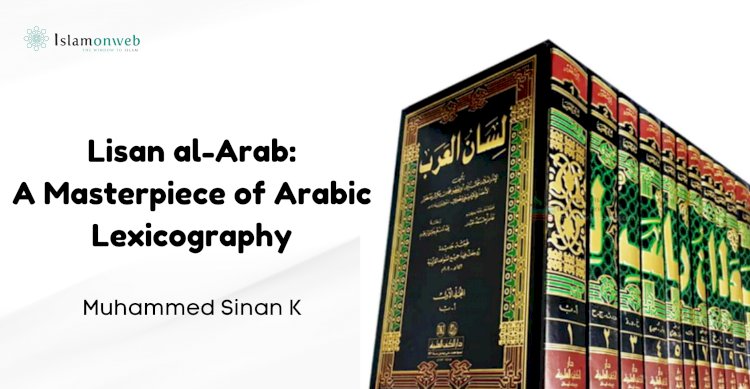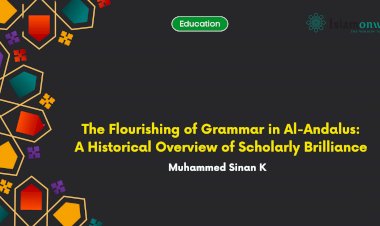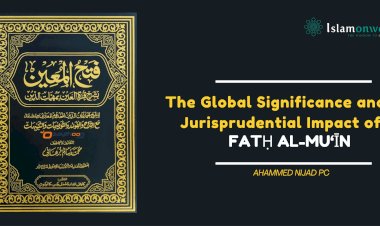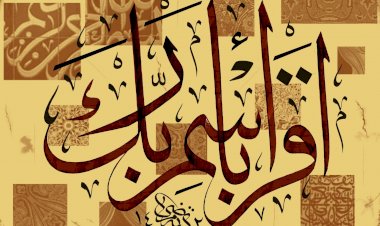Lisan al-Arab: A Masterpiece of Arabic Lexicography
Lisan al-Arab is one of the most comprehensive and influential dictionaries in the history of the Arabic language. Compiled by Ibn Manzur, this monumental work became a cornerstone for scholars, linguists, and students of Arabic for centuries. Its exhaustive coverage of the language, coupled with a meticulous arrangement, set it apart from previous lexicographical efforts. The dictionary not only preserved the linguistic heritage of classical Arabic but also served as an essential tool in understanding the Quran, Hadith, and Arabic literature. Its significance continues to resonate, as it is still widely referenced in the study of Arabic philology today.
Muhammad ibn Mukarram ibn Ali ibn Manzur al-Ansari al-Khazraji (630 AH - 711 AH / 1232 AD - 1311 AD) was a renowned historian, linguist, and judge in Tripoli, Libya. Ibn Hajar described him as being "infatuated with abridging lengthy literary works." Al-Zarkali highlighted the significance of his dictionary, noting that its author "collected the fundamental works of language, making it almost unnecessary to refer to any others." Ibn Manzur completed the compilation of Lisan al-Arab in 690 AH.
Objectives of Lisan al-Arab: Exhaustiveness and Arrangement
One of the defining features of Lisan al-Arab is its dual objective: Al-Istiqsaa' (Exhaustiveness) and At-Tarteeb (Arrangement). Ibn Manzur set out to create a dictionary that not only captured the full breadth of the Arabic language but also presented it in a structured and accessible manner, filling the gaps he identified in earlier linguistic works.
In previous efforts by other scholars, two distinct approaches to lexicography were evident. Works like Al-Azhari’s Tahdhib al-Lughah and Ibn Sida’s Muhkam focused primarily on linguistic exhaustiveness, gathering an expansive collection of words and their meanings. However, while these works excelled in breadth, they sometimes lacked in terms of organisation, making it challenging for readers to navigate such vast compilations.
On the other hand, dictionaries like Al-Jawhari’s As-Sihah emphasised structure and clarity, ensuring ease of access for the reader. However, this focus on arrangement often came at the expense of linguistic comprehensiveness, offering fewer words and less information than more exhaustive collections.
Ibn Manzur, in the introduction of his book, revealed his inspiration:
"I have always been passionately drawn to linguistic studies, keenly exploring their compositions and understanding the reasons behind their differences. Through my readings, I found that the scholars of language generally fall into two categories:
- Those who excelled in collecting material but lacked in organisation and
- Those who excelled in the organisation but were deficient in the collection.
Among the linguistic works, I found nothing more profound than Tahdhib al-Lughah by Abu Mansur Muhammad ibn Ahmad al-Azhari and nothing more comprehensive than Muhkam by Abu al-Hasan Ali ibn Ismail ibn Sida al-Andalusi. These two are indeed the cornerstones of linguistic scholarship, and all others are secondary in comparison”.
Ibn Manzur recognised the strengths and limitations of these previous approaches and sought to create a dictionary that would unite the best of both worlds. His ambition for Lisan al-Arab was to merge the wealth of content from exhaustive dictionaries with the clarity and order of well-structured ones. In doing so, he crafted a linguistic masterpiece that provided both depth and ease of use—qualities that made it invaluable for scholars, students, and anyone studying the Arabic language.
Ibn Manzur's motivation for compiling Lisan al-Arab was driven by three key factors: the connection of Arabic with the Quran and Hadith, the declining knowledge of the language, and the increasing pride in foreign languages. Recognising Arabic as the language of divine revelation, he aimed to preserve its purity for future generations. Observing a disconnect from Arabic due to foreign influences, he sought to provide a reliable reference to reverse this trend. Additionally, he aimed to reignite interest in Arabic, reminding people of its superiority due to its scriptural significance.
Methodology of Lisan al-Arab
The Lisan al-Arab, one of the most extensive dictionaries in the Arabic language, was meticulously crafted to fulfil two primary objectives: Al-Istiqsaa' (Exhaustiveness) and At-Tarteeb (Arrangement). In the preface of his dictionary, Ibn Manzur explicitly outlined the key sources that formed the foundation of his monumental work. He drew upon five authoritative lexicons, each respected for its depth and precision:
- Tahdhib al-Lughah by Abu Mansur al-Azhari (d. 370 AH)
- As-Sihah by Al-Jawhari (d. 393 AH)
- Al-Muhkam by Ibn Sida (d. 458 AH)
- Hawashi Ibn Barri (d. 582 AH) on As-Sihah
- An-Nihayah fi Gharib al-Hadith wa al-Athar by Ibn al-Jazari (d. 606 AH)
By combining these sources, Ibn Manzur ensured that Lisan al-Arab offered an unparalleled richness of material and authenticity. Each of these foundational texts provided crucial linguistic insights, ranging from the meanings of Quranic words and Hadith terminology to proverbs and classical Arabic poetry. This allowed Ibn Manzur to preserve the linguistic heritage of the Arabs in an encyclopedic format, safeguarding the connection between the language and its classical roots.
What sets Lisan al-Arab apart from other dictionaries is not just its vastness but also its precision in editing and expression. It covers approximately eighty thousand entries, a remarkable number that remains unmatched by any other Arabic dictionary. Each entry is carefully structured and annotated, demonstrating Ibn Manzur's commitment to providing not only the definitions but also authentic citations from the Quran, Hadith, and other classical sources.
Al-Baalbaki, a prominent scholar, highlighted the significance of Lisan al-Arab, stating:
"It is considered the most famous Arabic dictionary without dispute, due to its vast material and its inclusion of a large collection of authentic citations drawn from the Holy Quran, Hadith, and the proverbs and poetry of the Arabs."
This meticulous approach to lexicography ensured that Lisan al-Arab became the go-to reference for anyone seeking a comprehensive understanding of the Arabic language. Its influence continues to be felt, as it remains an essential resource for scholars, linguists, and students alike.
The Arrangement of the Dictionary
In the introduction to Lisan al-Arab, Ibn Manzur outlined that the dictionary follows the structure of Al-Jawhari's Sihah. The entries are organised according to the final letters of the triliteral roots of words. This unique approach sets Lisan al-Arab apart from other dictionaries of its time. The dictionary begins with words that end in the letter alif and follows an alphabetical pattern, progressing through the final letters of each root. For example, the word (أبأ) is placed at the beginning of the dictionary because it ends in alif and starts with alif, continuing in this pattern until the dictionary reaches its conclusion. Words containing vowel letters, which do not follow the same root system are given a dedicated section to maintain clarity.
Ibn Manzur’s work opens with an introduction, where he reflects on his goals for compiling the dictionary and expresses his admiration for the works of previous linguists. Following this, he includes two notable sections:
- The first section offers an explanation of the disjointed letters (Muqattaʿat) found at the beginning of certain surahs in the Quran, such as Kaf-Ha-Ya-'Ayn-Sad and Qaf.
- The second section is a detailed discussion of the Arabic letters themselves, focusing on their titles, characteristics, and linguistic properties.
The first section on the disjointed letters was largely borrowed from Tahdhib al-Lughah by Al-Azhari, with Ibn Manzur adding only thirteen lines to enhance it. The second section on the characteristics of the Arabic letters was drawn from the work of Abu al-Hasan Ali ibn Ahmad, whom Ibn Manzur acknowledges in his introduction.
The core of the dictionary is structured around the final letter of each triliteral root word. This method simplifies complex words by stripping away extraneous prefixes or suffixes, reducing them to their original root form. The words are then classified under the final letter of the root, with each final letter forming a "section" and the root's first letter defining a "class" within that section. For example, words ending in ba will be grouped together under the "ba" section and further classified based on their initial letters.
This diligent arrangement was particularly beneficial for poets and literary figures of the time, as it made it easier for them to find the rhymes they needed for composing lengthy and intricate poems. By organising the dictionary in this way, Ibn Manzur ensured that Lisan al-Arab would be a practical and valuable resource for both linguists and literary artists.
How to Search in Lisan al-Arab
To effectively navigate the vast entries in Lisan al-Arab, Ibn Manzur provided a clear methodology for searching for words. Given its structure based on triliteral roots, searching requires simplifying the word to its root form. Here’s a step-by-step guide to help users find words in the dictionary:
- Remove Extraneous Elements
Start by removing any prefixes, suffixes, or vowels that are not part of the root form of the word. - Revert to the Root Form
If the word is a verb, revert it to its past tense form. If the word is a noun, simplify it to its singular form. This step is crucial to ensure you are working with the correct triliteral root. - Locate the Word by the Final Root Letter
Once the root form is identified, search for the word in the section corresponding to the final letter of its triliteral root. This is the hallmark of Lisan al-Arab's unique arrangement, which classifies words based on the last letter of the root.
For example:
- The word ضرب (daraba, meaning "to strike") has the root letters Dhad-Ra-Ba. Therefore, you would locate this word under the section corresponding to the final letter, Ba.
- Another example is the word اتحاد (ittihad, meaning "union"), which is simplified to its root وَحَدَ (wahada). It would then be found in the section corresponding to the final letter, Dhad.
This arrangement allows users to navigate the extensive content of the dictionary efficiently, ensuring quick access to the desired word and its various forms.
Content and Features of Lisan al-Arab
There are widespread misconceptions about the number of entries in Lisan al-Arab. Some sources claim the dictionary contains 80,000 roots, but studies like those by Ali Hilmi Musa show that the actual number of roots is closer to 9,273. Despite this, the dictionary contains approximately 80,000 entries that provide a comprehensive exploration of Arabic word forms and their variations.
Lisan al-Arab is notable for its abundant references, drawing from a wide range of earlier works, making it one of the richest dictionaries of its kind. It includes a vast collection of synonyms and rare words, enhancing its value for linguists and poets. The dictionary also extensively cites the Quran and Hadith, grounding it in the Islamic tradition making it an essential resource for religious scholars.
Ibn Manzur carefully avoided the errors found in earlier works like Al-Jawhari’s Sihah, ensuring that Lisan al-Arab remained a reliable reference. It also provides detailed attention to morphological and grammatical rules, offering insights into the structure of the Arabic language. Despite its extensive content, the dictionary is praised for its ease of arrangement, making it accessible even to those unfamiliar with classical Arabic lexicography.
Criticisms and Studies of Lisan al-Arab
Despite its monumental status in Arabic lexicography, Lisan al-Arab has faced some criticisms. One common critique is the omission of certain forms and meanings, particularly those found in earlier works like Tahdhib al-Lughah. This has led to the perception that some entries need more completeness expected from such an extensive dictionary. Additionally, the dictionary relies solely on the specific references mentioned by Ibn Manzur in his introduction, leading to a limited scope of references compared to broader sources that might have further enriched its content. Another point of critique is the repetition of citations in some entries, resulting in occasional inconsistencies.
Despite these criticisms, Lisan al-Arab has been the subject of various studies and revisions, which have aimed to address these shortcomings and enhance its value. Notable among these are:
- Tashih Lisan al-Arab by Ahmad Taymur
- Tahdhib al-Lisan by Sayyid Abdullah Ismail al-Sawi
- Tahdhib al-Lisan by Professor Muhammad al-Najjari
These revisions and studies have elevated the dictionary's status among scholars and contributed to its ongoing relevance in the field of Arabic linguistics.
Conclusion
Lisan al-Arab, authored by Muhammad ibn Mukarram ibn Ali ibn Manzur al-Ansari al-Khazraji, remains a landmark in Arabic lexicography. Completed in 690 AH (1291 AD), the dictionary is notable for its extensive content, systematic organisation, and meticulous arrangement, which is based on the final letters of word roots. Ibn Manzur's aim to combine exhaustiveness with clarity is evident in the approximately eighty thousand entries, making it an essential reference for scholars, linguists, and poets alike.
Though some criticisms have been raised, its rich inclusion of synonyms and rare words, alongside frequent citations from the Quran and Hadith, solidifies its place as a crucial resource in Arabic linguistic scholarship. Through its influence on various fields of study, including Arabic poetry and linguistics, and with revisions that have refined its content over time, Lisan al-Arab exemplifies Ibn Manzur's commitment to producing a masterpiece of Arabic lexicography.
REFERENCES:
. Al-Zirikli, K. (2002). *Al-A'lam: A dictionary of the most famous men and women from Arabs, Muslim scholars, and Orientalists*
Ibn Manzur, M. I. (2011). *Lisān al-ʻArab* (7th ed.). Beirut: Dar Sader.
Mir 'Ilm, Y. (2016). *Verbs, roots, and structures in Arabic (A comparative statistical study)*
About the author:
Muhammed Sinan K is a research scholar pursuing a degree in Arabic Language and Literature at Darul Huda Islamic University
Disclaimer
The views expressed in this article are the author’s own and do not necessarily mirror Islamonweb’s editorial stance.
























Leave A Comment